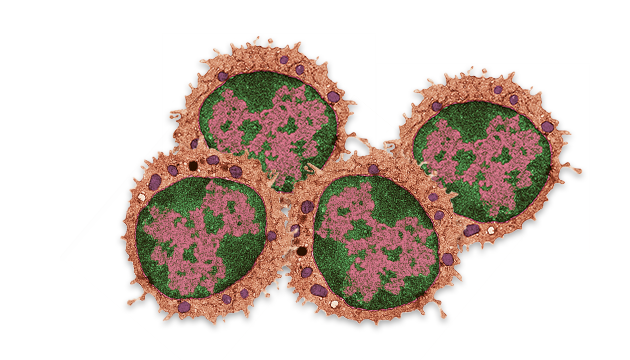
LA JOLLA, CA – Immunotherapies hold promise as a way to prompt a patient’s own immune system to fight cancer cells. Yet immunotherapies only work in about 30 percent of patients—and they can cause dangerous side effects.
Scientists at the La Jolla Institute for Immunology (LJI) want to know why.
In a new study LJI scientists collaborated with a team from the University of Southampton to better understand a group of immune cells called tissue-resident memory T cells (TRMs). These cells are known to help the body fight infection, but there is increasing evidence that they also play a key role in fighting tumors.
According to the new Journal of Experimental Medicine study, published in the June 21, 2019 edition, TRMs are indeed key tumor fighters. These cells are unique for their ability to seek out and kill tumor cells without suffering from the common phenomenon of T cell “exhaustion.”
“This study identifies a type of T cell that actually is superior in its killing and functional potential,” says Pandurangan Vijayanand, M.D., Ph.D., an associate professor in the Division of Vaccine Discovery and William K. Bowes Distinguished Professor at LJI. Vijayanand co-led the study with Christian Ottensmeier, M.D., Ph.D., FRCP, professor of experimental medicine at the University of Southampton and an adjunct Professor at LJI.
“The findings open a testable hypothesis for designing a more effective but less toxic immunotherapy,” adds Ottensmeier.
The new study was possible thanks to tools developed at LJI to study rare T cell populations in clinical samples. Vijayanand and his colleagues used these tools to compare tumor samples, collected by University of Southampton scientists, to healthy tissue samples.
This work built on a 2017 study suggesting that TRMs may be the T cell subpopulation doing the heavy lifting when it came to killing tumors. While scientists knew that a higher number of T cells in a tumor could help predict a better patient outcome, the discovery of the role of TRMs gave them a clue to which cells were the best ones to activate using immunotherapies.
“We showed that this population is more active in patients that respond to immunotherapy and patients known to have a good outcome,” says James Clarke, Ph.D., a former graduate student and postdoctoral researcher at LJI and the University of Southampton, who now serves as an immunology scientist at Google/Verily Life Sciences.
The new study shows exactly why these TRMs are such good fighters.
Using a technique called RNA-seq the scientists discovered that TRMs target tumors specifically—they aren’t in tumors by accident. The researchers also discovered that the TRMs in tumors didn’t appear susceptible to T cell exhaustion.
Next came a big surprise. TRM cells possess tumor-fighting power despite elevated levels of a protein called PD-1. Compared with PD-1 expressing non-TRM cells, the PD-1 expressing TRM cells could multiply more quickly and were more cytotoxic, meaning they could kill tumor cells.
Researchers tend to think of PD-1 expressing T cells as dysfunctional, yet PD-1 expressing TRM cells appeared to have better functionality.
This was encouraging news for the researchers because there are already immunotherapies designed to target PD-1. For a long time, it was unclear which immune cells these PD-1 therapies were targeting in human cancers. Now it appears they can target TRM cells, the most elite tumor-fighting subpopulation.
“You want therapies to turn on these cells so they can kill the cancer,” says Vijayanand.
As they move forward with clinical studies of how PD-1 and other novel therapies affect TRMs, the researchers are hopeful that these therapies may also come with fewer harmful side effects for patients.
The LJI team emphasized the importance of the work at the University of Southampton to study tumor immune responses from human patients. This TRM subpopulation can be readily found in humans, so the researchers plan to continue working together as they learn more about these tumor-killing cells.
Full citation:
James Clarke, Bharat Panwar, Ariel Madrigal, Divya Singh, Ravindra Gujar, Oliver Wood, Serena J. Chee, Simon Eschweiler, Emma King, Amiera S. Awad, Christopher J. Hanley, Katy J. McCann, Sourya Bhattacharyya, Edwin Woo, Aiman Alzetani, Grégory Seumois, Gareth J. Thomas, Anusha-Preethi Ganesan, Peter S. Friedmann, Tilman Sanchez-Elsner, Ferhat Ay, Christian H. Ottensmeier, Pandurangan Vijayanand. Single-cell transcriptomic analysis of tissue-resident memory T cells in human lung cancer. Journal of Experimental Medicine, 2019.





